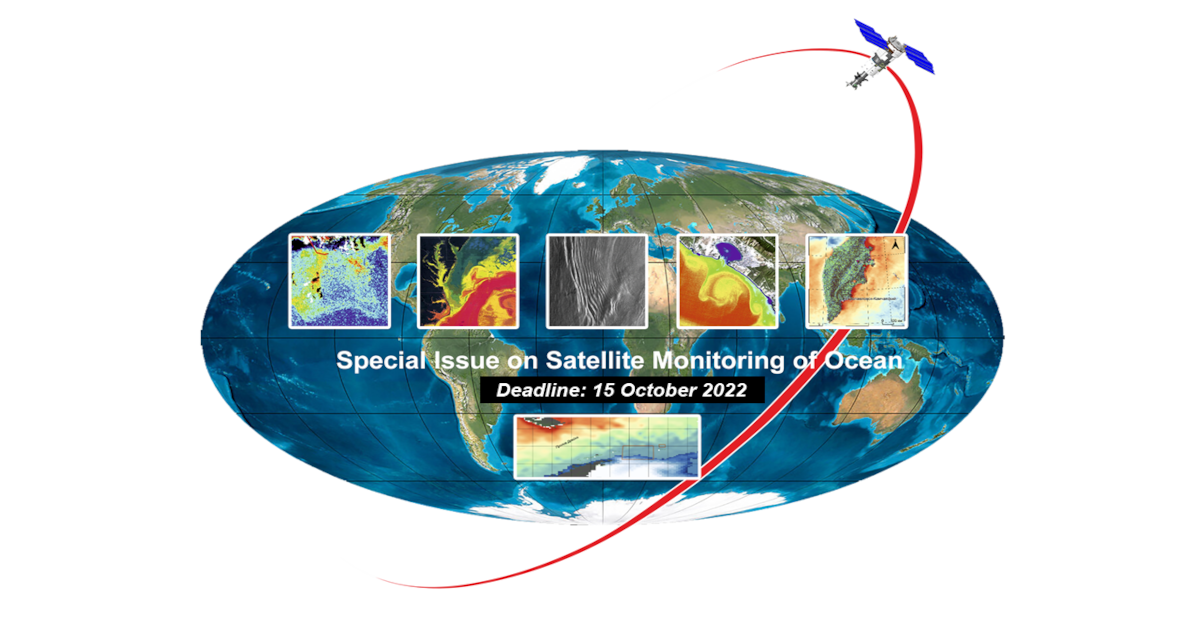Satellite Monitoring of Ocean
A special issue of Journal of Marine Science and Engineering (ISSN 2077-1312). This special issue belongs to the section "Physical Oceanography".
Deadline for manuscript submissions: closed (15 October 2022) | Viewed by 17972

Special Issue Editor
Interests: physical fundamentals of satellite research of the Earth; ocean optics, sea surface radar studies, remote sensing of the aquatic environment; retrieval of wave spectra from the spectra of optical images of the sea surface; satellite monitoring of anomalous natural and anthropogenic processes and phenomena in the seas and oceans (environmental accidents, intense deep discharges, large-scale oil spills, etc.); remote diagnostics of deep processes in the seas and oceans by their manifestations on the surface and in the near-surface layer; satellite research of the Arctic and Antarctic; processing of large data flows from satellites for remote monitoring of seas and oceans
Special Issues, Collections and Topics in MDPI journals
Special Issue Information
Dear Colleagues,
This Special Issue of JMSE focuses on satellite monitoring of the ocean, which is rapidly evolving with the growing capabilities of state-of-the-art systems for remote sensing of the Earth from space and methods of satellite information processing. The issue contains articles dedicated to modern approaches to solving problems of remote diagnostics of processes on the surface, in the near-surface layer, and in the deep layers of the ocean. Particular attention is paid to the use of satellite methods for the analysis of various anomalous phenomena in the seas and oceans. The physical features of the formation of signal fields in ocean remote sensing facilities and methods to retrieve significant parameters of the aquatic environment, which provide objective information about the state of the seas and oceans, are considered. The possibilities of using passive and active methods and means operating in various ranges of the spectrum of electromagnetic waves for monitoring processes and phenomena in the ocean are shown. The results of the study of anthropogenic and natural impacts on sea areas, based on the analysis of satellite images obtained in the optical and microwave ranges of the spectrum, are presented. The capabilities of methods and assets for processing large flows of satellite information to solve problems of satellite oceanography, including in the waters of the Arctic and Southern Oceans, are analyzed. The issues of assimilation of remote sensing data in numerical ocean models are considered. Application of satellite monitoring techniques and facilities to study physical features of energy exchange between the agitated sea surface, the dynamic near-surface layer of the atmosphere, and deep processes, taking into account the nonlinear interaction of surface waves, are considered.
Prof. Dr. Valery Bondur
Guest Editor
Manuscript Submission Information
Manuscripts should be submitted online at www.mdpi.com by registering and logging in to this website. Once you are registered, click here to go to the submission form. Manuscripts can be submitted until the deadline. All submissions that pass pre-check are peer-reviewed. Accepted papers will be published continuously in the journal (as soon as accepted) and will be listed together on the special issue website. Research articles, review articles as well as short communications are invited. For planned papers, a title and short abstract (about 100 words) can be sent to the Editorial Office for announcement on this website.
Submitted manuscripts should not have been published previously, nor be under consideration for publication elsewhere (except conference proceedings papers). All manuscripts are thoroughly refereed through a single-blind peer-review process. A guide for authors and other relevant information for submission of manuscripts is available on the Instructions for Authors page. Journal of Marine Science and Engineering is an international peer-reviewed open access monthly journal published by MDPI.
Please visit the Instructions for Authors page before submitting a manuscript. The Article Processing Charge (APC) for publication in this open access journal is 2600 CHF (Swiss Francs). Submitted papers should be well formatted and use good English. Authors may use MDPI's English editing service prior to publication or during author revisions.
Keywords
- satellite oceanography
- satellite image processing
- ocean remote sensing
- sea surface spectra
- retrieval of wave spectra
- internal waves
- ocean disasters
- environmental monitoring
- remote sensing data assimilation
- numerical ocean models





